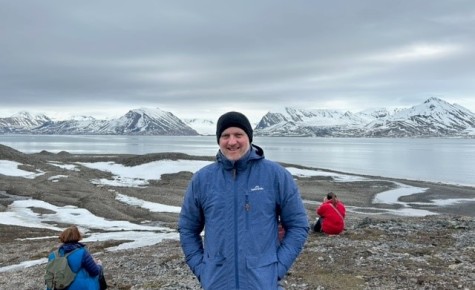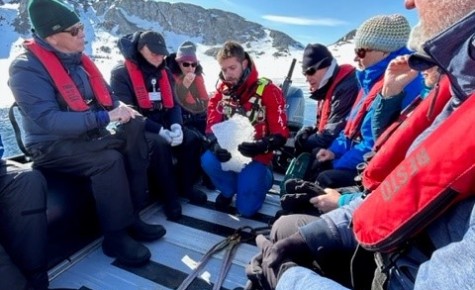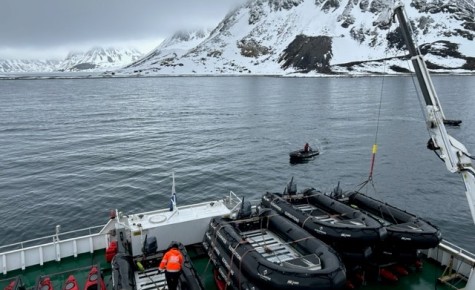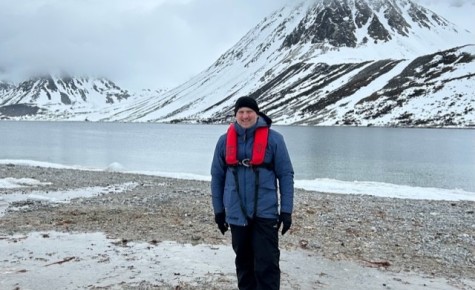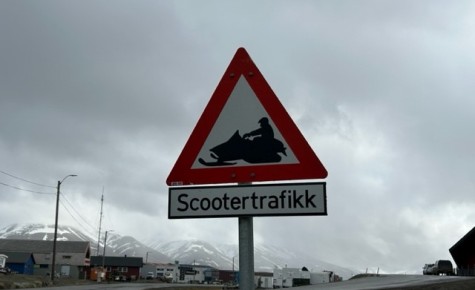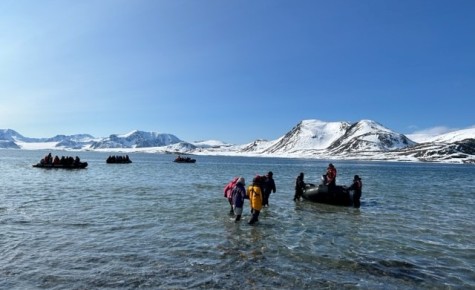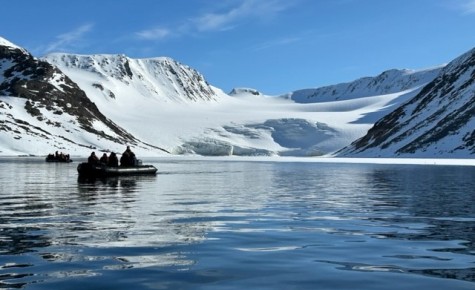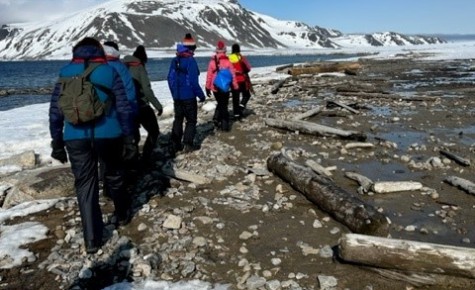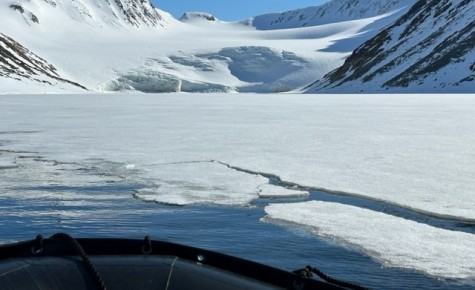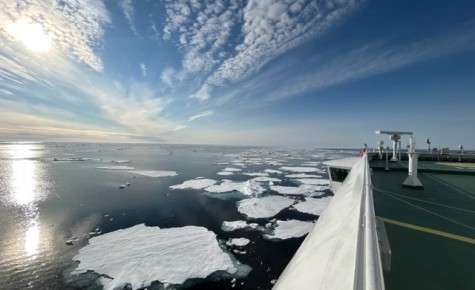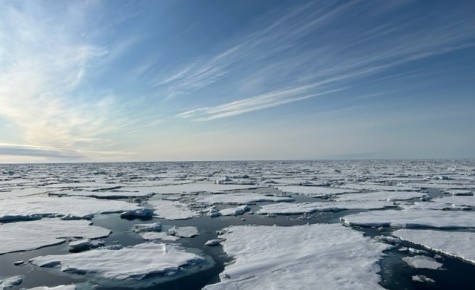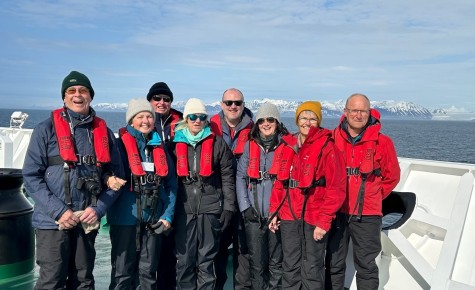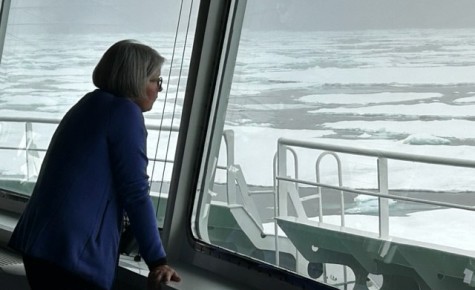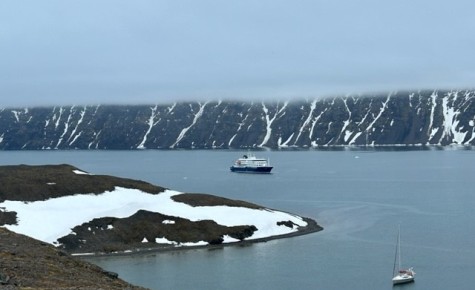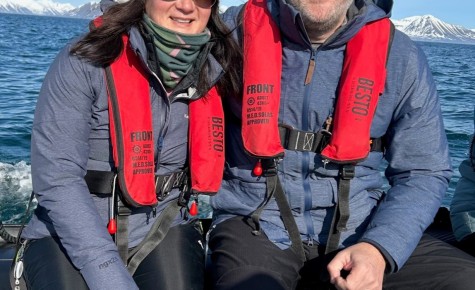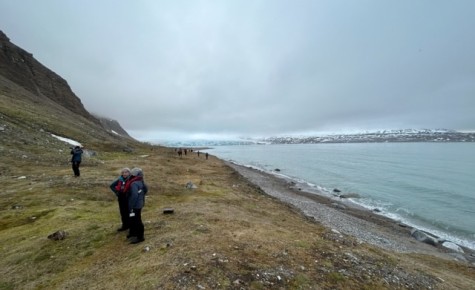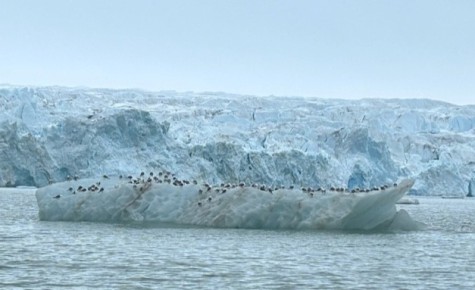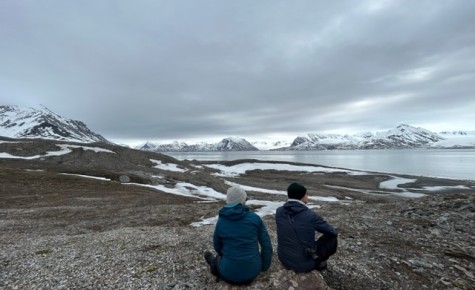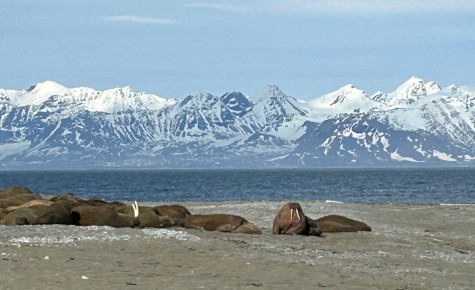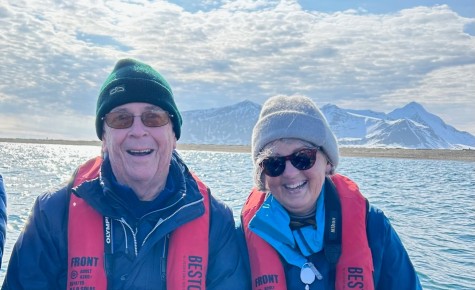A few years ago, I wrote a short piece about how much I enjoyed my 2 day ‘digital detox’ aboard the Rocky Mountaineer train in the wilds of British Colombia. Disconnected from phone and internet does provide an increasingly rare opportunity to focus entirely on your surroundings and so a week aboard Oceanwide Expeditions’ newest (2019) ship ‘Hondius’ in Northern Spitsbergen (also known as Svalbard) in search of pack ice and polar bears was always going to be a wonderful experience in what remains a true wilderness.
At 78N, our embarkation point of Longyearbyen is about as far North as it’s possible to fly before you have to get aboard a ship to get closer to the Pole. It’s probably also the greatest distance from NZ as it’s possible to travel, a fact often remarked on by the ship’s crew & expedition team who were delighted to see our little group of Kiwi travellers journey so far to join them!
Our departure had 158 guests from many different nationalities so just short of the 170 capacity and also 72 crew aboard. It’s the world’s first polar class 6 cruise vessel, so ideal for operating in the ‘brash’ (floating) ice choked waters we would encounter as we headed to our furthest north of approx 80”30’N, very close to the edge of the pack ice.
The Hondius is extremely comfortable as you’d expect from a new ship with lovely cabins, a dining room capable of accommodating everyone in one sitting, a purpose built lecture room, large observation lounge & bar and crucially, two ‘shell’ (sea) doors for zodiac access, making that the boarding process very straightforward even in swells. Despite also having guests from Germany, Netherlands, China and Vietnam aboard, English is the official language spoken by the staff and 11 expedition staff, so ideal for Kiwis. The ship’s crew were a delight, very friendly and welcoming and made us feel like one big family for the week.
Like most expedition ships, the bridge remained open for most of the voyage, with the ship’s officers welcoming guests in, so that was a popular spot for those with binoculars and scopes trained for wildlife given that the outside air temperature hovered between -1C and +2C for most of the voyage.
After the usual initial safety briefings involving life jackets and lifeboats and staff introductions, we quickly settled into the rhythms and daily structure of our expedition, being woken by our enthusiastic leader Sara as early as 630am most days, although with 24hr daylight this close to the summer solstice we were very grateful for the blackout blinds in our cabins!
After a hearty breakfast, the day’s activities would commence by swiping our cards for off ship excursions with either a zodiac landing or zodiac cruise, the ship being divided into ‘blue’ and ‘red’ groups of equal numbers and then the groups swapping over mid morning so everyone was able to enjoy each activity. After another equally hearty buffet lunch (mental note to self, must go on a diet before and after each expedition cruise!) the pattern would resume before a day’s recap and preview of the next day’s activities before dinner around 730. After dinner people would enjoy a drink and a chat with new friends in the lounge, peruse the collection of polar literature and reference books in the library or head out on deck or to the bridge with binoculars.
For two days, we meandered through the ice on the edge of the pack looking for polar bears hunting for seals, and on those days no zodiac operations were possible, so the expedition team presented their lecture program on topics like climate change, whaling history, marine mammals, photography and the famous Norwegian ‘heroic era’ explorers like Nansen and Amundsen . Each day Sara implored us to forget about getting our quota of sleep though and make the most of the endless daylight, encouraging us to get out on deck to help the expedition staff look for bears, whales, seals, polar birds and other wildlife on the ice.
We could not have hoped for better weather with clear conditions every day and an incredible amounts of sunshine. The ice in NW Spitsbergen provided a barrier to swells, and the fjords natural shelter, so once away from Longyearbyen and up the coast to the North, our sailing conditions were flat calms most days.
So, what of the wildlife? Unlike Antarctica, where wildlife sightings are pretty much guaranteed and predictable in certain locations, the emphasis here is on the need for searching – especially for polar bears. The Svalbard government’s police and environmental protection office has incredibly strict rules in place for tourism operators, particularly around firearms permits (all guides carry rifles when going ashore – bears are dangerous of course, but guides hope to never have to use them) with no interference with wildlife permitted, and there are large fines to ensure compliance. We saw walrus haul-outs in two locations, but always from safe distances so as to not disturb these fabulously lazy bundles of blubber!
Operators cannot report the location of bears to other ships, even within their fleet so there’s a fair amount of highly educated guesswork employed to locate them. With rapid climate change in the part of the Arctic theorised by many scientists to cause a summer retreat in the pack ice over the next couple of decades further northwest towards Greenland, it’s possible that polar bear numbers in Svalbard may decline and they will become harder to spot.
Ironically, on our expedition there was almost too much sea ice in the north of the archipelago so we couldn’t traverse the top, rather focus our efforts off the NW tip. After two days, Sara’s perseverance in searching in these icy waters finally paid off with a sighting of one bear, albeit at some distance at 11pm, cue a scramble for the keen to jump out of bed and head up to the bridge to view this majestic animal through the ship’s scopes.
As well as the large walrus gatherings, we also saw minke whales off the ship, plenty of seals, arctic foxes, Svalbard reindeer and thousands of impressive nesting birds including arctic terns, kittiwakes, guillemots, skuas, puffins, auks and eiders. The king eiders were a real highlight for the birdwatchers on board.
The scenery of Svalbard is stunning, with snow capped mountains, huge glaciers and endless swathes of tundra (year round permafrost).
Yet, despite the harsh conditions and very short growing season, saxifrage and mosses were somehow thriving. My favourite moments were when we found a spot ashore and our guides encouraged us to take time to contemplate this incredible landscape in compete silence. With phones and the click of cameras put away, it was amazing how much you could really hear. For me, this was the essence of the voyage, a chance to enjoy those quiet moments and reflect how lucky I was to enjoy a place few people would be able to locate on a map and which very few New Zealanders get the opportunity to visit.
So, ‘Takk’ (thanks) Svalbard, it’s been great!





